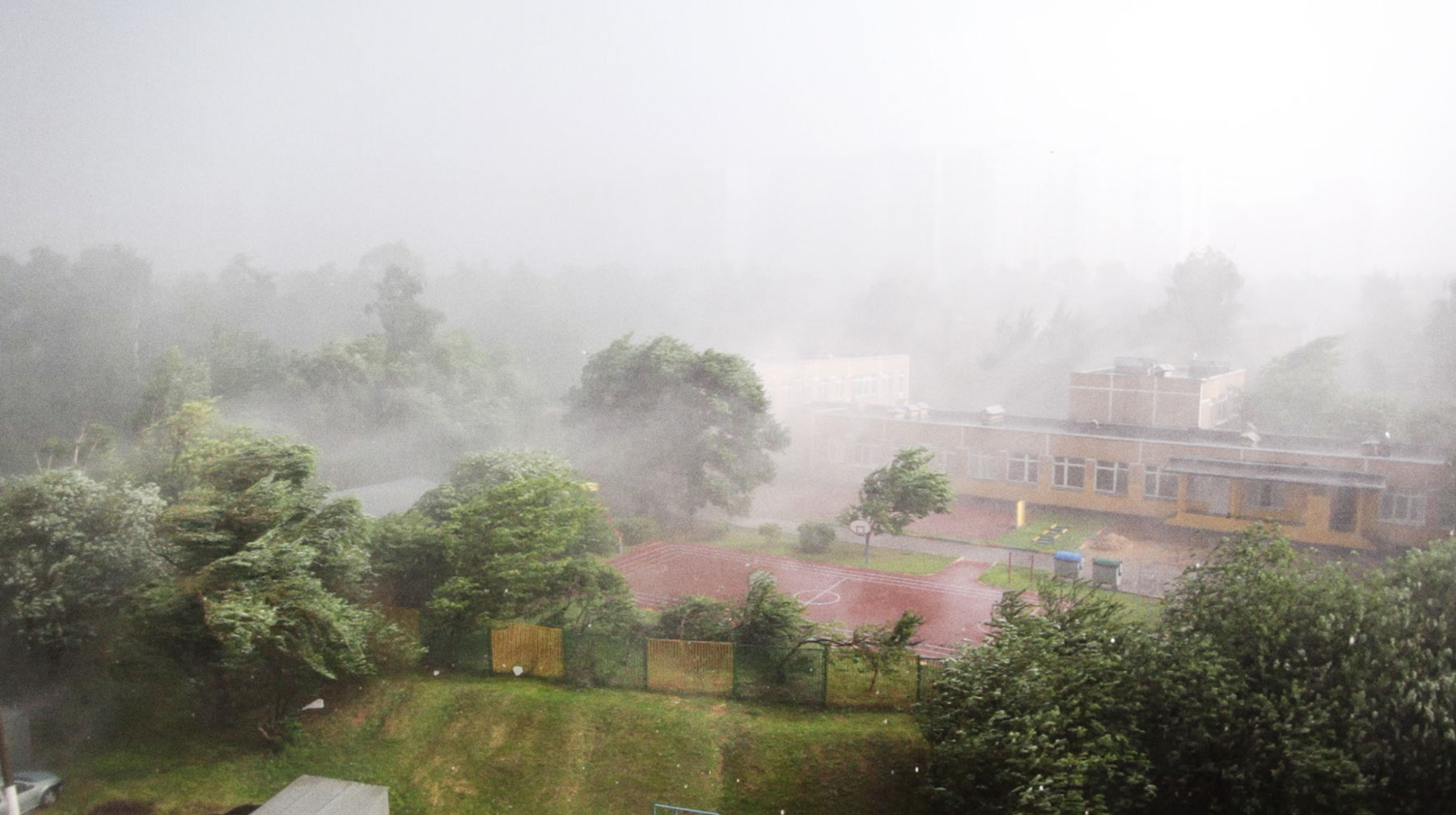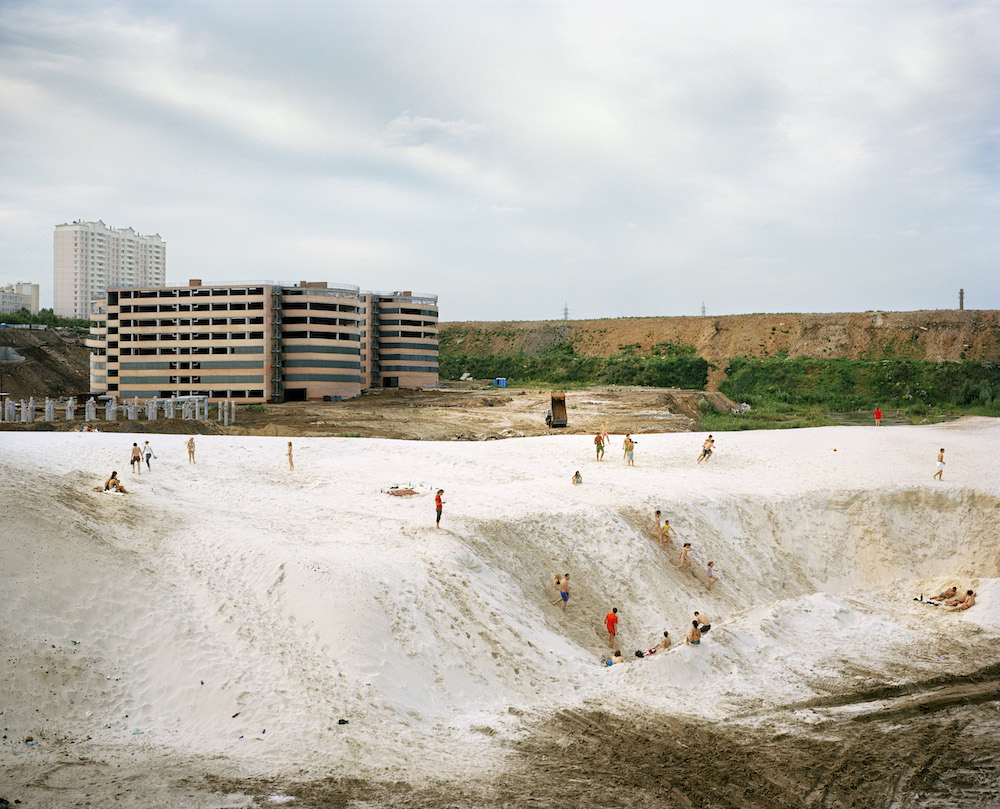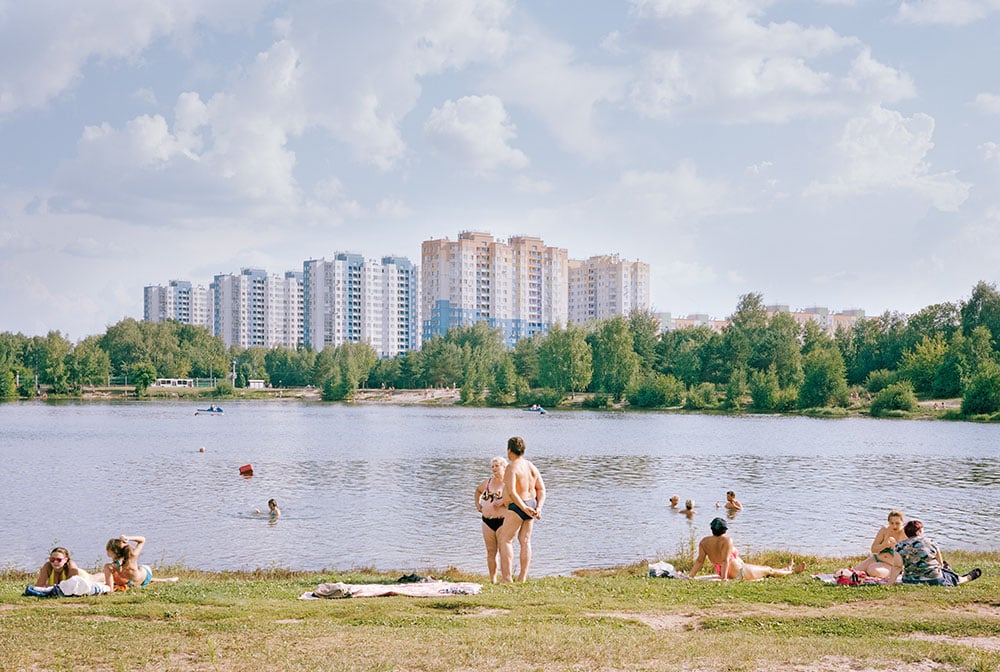These photos capture two decades of Russia’s shifting landscape
A group photography exhibition in Moscow explores post-Soviet Russia through its changing landscape. Here, curators and participating photographers Anastasia Tsayder and Petr Antonov pick seven captivating vistas from the show, from ageing housing blocks to the frozen Yenisei river.
We had long wanted to produce an exhibition that tied together everyday life and photography in Russia, and decided on landscape photography as a happy medium for the show. We are often so familiar with the environment around us that we stop noticing its idiosyncrasies; images of landscapes can often ground us in reality.
The exhibition The New Landscape was meant as an introduction to seven exceptional photographers living in Russia. Bringing it to Yekaterinburg, Krasnoyarsk, and now to Moscow, we didn’t anticipate just how much the show would resonate with local people. Although these projects were shot across Russia, they sit within a wider international context as an example of how political, economic, and social changes drastically impact our environment.
Liza Faktor
Surface of Siberia (2001)
Liza Faktor is best known as the founder of the Objective Reality Foundation and co-founder of photo agency photographer.ru. Her photography is undeservedly overlooked, despite the fact she was among the first Russian photographers in the early 2000s to dedicate her practice to the man-made landscape. For this exhibition we chose her project Surface of Siberia, shot between 2001–2003. Her photographs evoke the sense of a primordial landscape — chaotic and devoid of people.
This photograph of drift ice on the Yenisei river in central Siberia is part of the triptych that opens the show. The image bears virtually no trace of human presence, as if Siberia had never been conquered. The ice, however, is as tall as the human figure. When we blew up this photograph for the show, larger than it had ever been printed before, we discovered the frozen fish in the turquoise ice.
Alexander Gronsky
Less Than One (2008)
Alexander Gronsky’s sober yet sublime depictions of the Russian landscapes have earned him numerous awards including the World Press Photo, Paul Huf, and the Russian Innovatsiya prize. For this exhibition we chose his early project titled Less than One, shot in 2006–2008. The title of the project refers to poet Joseph Brodsky’s eponymous autobiographical essay, and to the fact that one third of Russia’s territory has a population density of less than one person per square kilometre.
The photograph is of an otherwise unknown town called Tulun and is the first image in the exhibition to show human presence. Instead of being presented as a powerful force over nature, the two tiny human figures seem to blend into the landscape or appear as detached observers. The snow-covered field that engulfs them is oddly covered with discarded cardboard boxes — a visual nod to man’s urge to build on and transform nature.
Valeri Nistratov
Documents of Nature (2008)
Valeri Nistratov’s photographic career spans several decades. Nistratov became a news photographer when he was just 17 years old, and has reinvented himself several times since, now working within the realm of art photography. His project Documents of Nature was shot along the fringes of Moscow between 2008 and 2011. Within the scope of the show, the project shows the man-made landscape encroaching on nature.
This photograph shows a typical post-Soviet edgeland, where agricultural land has been turned into gated communities for the nouveaux riches. The image shows the multitude of layers present in the landscape, and the multitude of agents changing it. You see a plot of former collective farming land, privatised by one entity, fenced off by another, and then developed by a third. The notice boards nailed to the lone pine tree in the foreground, advertising concrete pouring services, are another reminder of how easily nature is co-opted.
Petr Antonov
Trees, Cars, Figures of People, Assorted Barriers (2011)
Petr Antonov began his photographic career as a press photographer. For the past decade, his work has focused primarily on studying the landscape. Trees, Cars, Figures of People, Assorted Barriers, shot in 2010–2013, explores the new built environment of Moscow, which seems always in a state of flux.
This photograph shows a nondescript location on the city’s edges, which functions as a transport hub for commuters to suburban neighbourhoods and shopping malls. The image is littered with kiosks, posters, bus stops, makeshift markets, and shops. A variety of buses — either bringing shoppers from the nearby IKEA or taking them to the new suburban real estate developments — populate the three-lane road running through the image.
Max Sher
Palimpsests (2014)
Palimpsests by Max Sher is the most comprehensive photographic study of the post-Soviet landscape. The project, started in 2010, took eight years to complete and spans over 70 towns. While Antonov’s Trees, Cars, Figures of People, Assorted Barriers strives to build a general picture of a post-Soviet city though photos of Moscow, Sher has been searching for an objective visual language for Russia by visiting and photographing a multitude of cities.
This photograph is dominated by a late Soviet apartment block. Renovating your living space, by converting your balcony for example, is nothing new for the post-Soviet cityscape. Here each balcony has its own different design: notice the variations of window frames and shingle colours. The foreground is taken up by an improvised parking lot with a goalpost and a makeshift fence made of used tyres. In the background a modern high rise development — not yet completed — towers into view.
Sergey Novikov
Grassroots (2016)
From 2012-2017, Sergey Novikov has been documenting lower league football clubs across Russia. The selection shown in New Landscape features amateur football stadiums in a variety of settings, from the Russian North to the Caucasus to Far East, where this photo was taken.
The image shows an amateur football game in the town of Artyom. The sense of perspective and composition is reminiscent of classical paintings — except here, in place of a spectacular mountain view, you see the cooling towers of a power plant. The building to the right has the distinct shape of almost any Russian dacha country house, identifiable also by its corrugated iron fence.
Anastasia Tsayder
Arcadia (2016)
Anastasia Tsayder’s photographs of village houses, schools, hospitals, Olympic stadium arenas, and other post-Soviet interiors have been widely exhibited in Russia and abroad. In her recent project, Arcadia, Tsayder shifts her focus from interiors to landscape photography. Arcadia is a multi-faceted study of the heritage and afterlife of Soviet modernism.
This image is part of the four-part polyptych selected for the show that depict several courtyards in the city of Tolyatti. The factory town was built on the banks of the river Volga to accommodate the workers of the USSR’s largest car manufacturer, VAZ. Construction of the workers’ paradise began during the 1950s, drawing on ideas of socialist urban planning, and continued well into the next decade. When industry began to wane, the city’s vegetation was left to its own devices. In this photo the urban jungle is swallowing up the ageing housing blocks, bringing us back to Liza Faktor’s triptych, and the idea that nature isn’t ours to conquer.
The New Landscape is on display at Ekaterina Cultural Foundation in Moscow until 24 March. You can find more information here.


